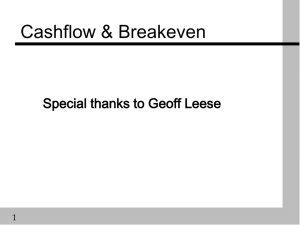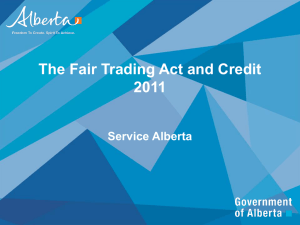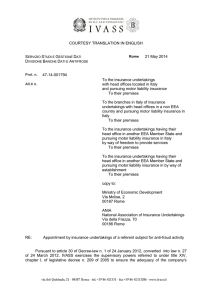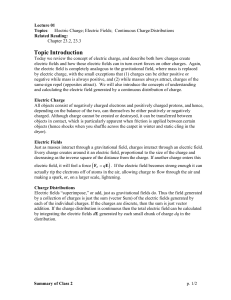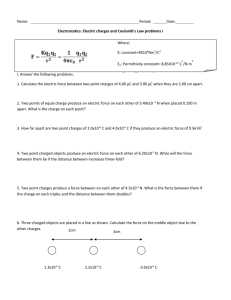Annex 6
advertisement
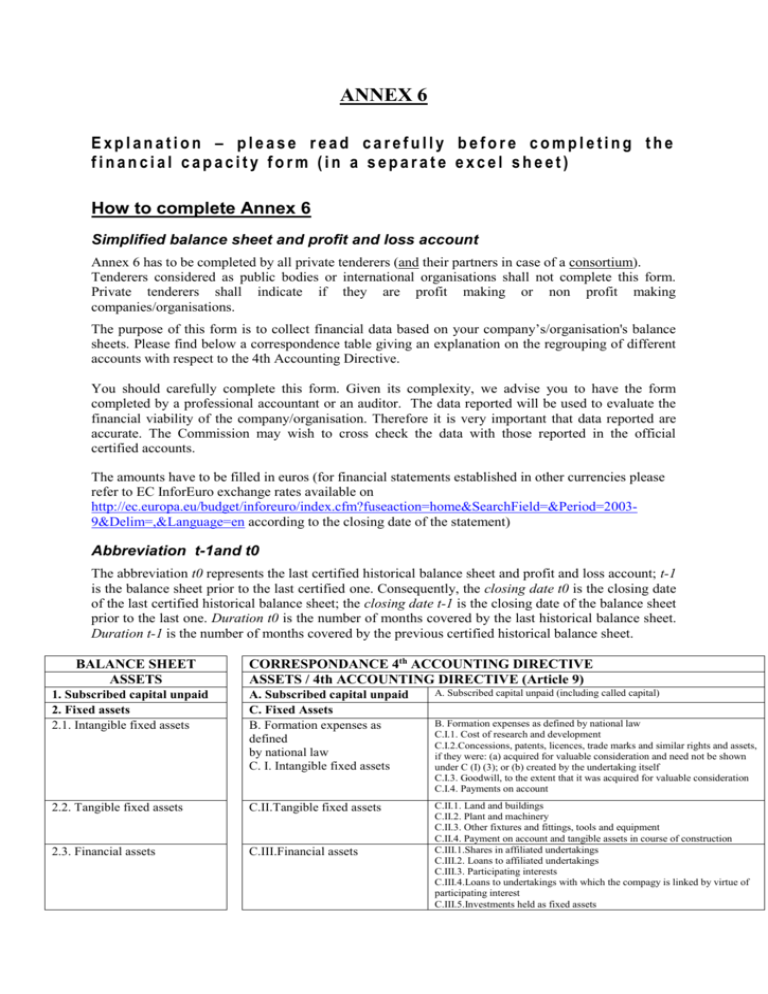
ANNEX 6 Explanation – please read carefully before completing the financial capacity form (in a separate excel sheet) How to complete Annex 6 Simplified balance sheet and profit and loss account Annex 6 has to be completed by all private tenderers (and their partners in case of a consortium). Tenderers considered as public bodies or international organisations shall not complete this form. Private tenderers shall indicate if they are profit making or non profit making companies/organisations. The purpose of this form is to collect financial data based on your company’s/organisation's balance sheets. Please find below a correspondence table giving an explanation on the regrouping of different accounts with respect to the 4th Accounting Directive. You should carefully complete this form. Given its complexity, we advise you to have the form completed by a professional accountant or an auditor. The data reported will be used to evaluate the financial viability of the company/organisation. Therefore it is very important that data reported are accurate. The Commission may wish to cross check the data with those reported in the official certified accounts. The amounts have to be filled in euros (for financial statements established in other currencies please refer to EC InforEuro exchange rates available on http://ec.europa.eu/budget/inforeuro/index.cfm?fuseaction=home&SearchField=&Period=20039&Delim=,&Language=en according to the closing date of the statement) Abbreviation t-1and t0 The abbreviation t0 represents the last certified historical balance sheet and profit and loss account; t-1 is the balance sheet prior to the last certified one. Consequently, the closing date t0 is the closing date of the last certified historical balance sheet; the closing date t-1 is the closing date of the balance sheet prior to the last one. Duration t0 is the number of months covered by the last historical balance sheet. Duration t-1 is the number of months covered by the previous certified historical balance sheet. BALANCE SHEET ASSETS CORRESPONDANCE 4th ACCOUNTING DIRECTIVE ASSETS / 4th ACCOUNTING DIRECTIVE (Article 9) 1. Subscribed capital unpaid 2. Fixed assets 2.1. Intangible fixed assets A. Subscribed capital unpaid C. Fixed Assets B. Formation expenses as defined by national law C. I. Intangible fixed assets A. Subscribed capital unpaid (including called capital) 2.2. Tangible fixed assets C.II.Tangible fixed assets 2.3. Financial assets C.III.Financial assets C.II.1. Land and buildings C.II.2. Plant and machinery C.II.3. Other fixtures and fittings, tools and equipment C.II.4. Payment on account and tangible assets in course of construction C.III.1.Shares in affiliated undertakings C.III.2. Loans to affiliated undertakings C.III.3. Participating interests C.III.4.Loans to undertakings with which the compagy is linked by virtue of participating interest C.III.5.Investments held as fixed assets B. Formation expenses as defined by national law C.I.1. Cost of research and development C.I.2.Concessions, patents, licences, trade marks and similar rights and assets, if they were: (a) acquired for valuable consideration and need not be shown under C (I) (3); or (b) created by the undertaking itself C.I.3. Goodwill, to the extent that it was acquired for valuable consideration C.I.4. Payments on account C.III. 6. Other loans C.III.7. Own shares (with an indication of their nominal value or, in the absence of a nominal value, their accounting par value) 3. Current assets 3.1. Stocks D. Currents assets D.I.Stocks 3.2.1. Debtors due after one year D.II. Debtors, due and payable after more than one year 3.2.2. Debtors due within one year D.II. Debtors due and payable within a year 3.3. Cash at bank and in hand 3.4. Other current assets D.IV. Cash at bank and in hand D.III Investments Total assets Total assets LIABILITIES 4. Capital and reserves 4.1. Subscribed capital 4.2. Reserves D.III.1. Shares in affiliated undertakings D.III.2.Own shares (with an indication of their nominal value or, in the absence of a nominal value, their accounting par value) D.III.3. Other investments LIABILITIES / 4th ACCOUNTING DIRECTIVE (Article 9) A. Capital and reserves A.I. Subscribed capital A.II. Share premium account A.III. Revaluation reserve A.IV. Reserves 4.3. Profit and loss brought forward from the previous years 4.4. Profit and loss for the financial year 5. Creditors 5.1.1 Long term non-bank debt A.V Profit and loss brought forward from the previous years 5.2.1. Long term bank debt C. Creditors "credit institutions" (> one year) B. Provisions for liabilities and charges (= one year) C. Creditors (= one year) 5.1.2. Short term non-bank debt D.I.1. Raw materials and consumables D.I.2. Work in progress D.I.3. Finished products and goods for resale D.I.4 Payment on account D.II.1. Trade debtors D.II.2. Amounts owed by affiliated undertakings D.II.3. Amounts owed by undertakings with which the compagny is linked by virtue of participating interest D.II.4. Others debtors D.II.6. Prepayments and accrued income D.II.1. Trade debtors D.II.2. Amounts owed by affiliated undertakings D.II.3. Amounts owed by undertakings with which the compagny is linked by virtue of participating interest D.II.4. Others debtors D.II.6. Prepayments and accrued income D.IV. Cash at bank and in hand A.VI. Profit or loss for the financial year C. Creditors B. Provisions for liabilities and charges ( > one year) C. Creditors ( > one year) A.I. Subscribed capital A.II. Share premium account A.III. Revaluation reserve A.IV.1. Legal reserve, in so far as national law requires such a reserve A.IV.2. Reserve for own shares A.IV.3. Reserves provided for by the articles of association A.IV.4. Other reserves A.V Profit and loss brought forward from the previous years A.VI. Profit or loss for the financial year B.1. Provisions for pensions and similar obligations B.2. Provisions for taxation B.3. Other provisions C.1. Debenture loans, showing convertible loans separately C.3. Payments received on account of orders in so far as they are not shown separately as deductions from stocks C.4. Trade creditors C.6. Amounts owed to affiliated undertakings C.7. Amounts owed to undertakings with which the company is linked by virtue of participating interests C.8. Other creditors including tax and social security C.9. Accruals and deferred income C.2. Amounts owed to credit institutions C.5. Bills of exchange payable B.1. Provisions for pensions and similar obligations B.2. Provisions for taxation B.3. Other provisions C.1. Debenture loans, showing convertible loans separately C.3. Payments received on account of orders in so far as they are not shown separately as deductions from stocks C.4. Trade creditors C.6. Amounts owed to affiliated undertakings C.7. Amounts owed to undertakings with which the company is linked by virtue of participating interests C.8. Other creditors including tax and social security C.9. Accruals and deferred income 5.2.2. Short term bank debt Total liabilities C. Creditors "credit institutions" (= one year) Total liabilities C.2. Amounts owed to credit institutions C.5. Bills of exchange payable PROFIT AND LOSS ACCOUNT PROFIT AND LOSS ACCOUNT / 4TH ACCOUNTING DIRECTIVE (Article 23) 6. Turnover 1. Net turnover 1. Net turnover 7. Variation in stocks 2. Variation in stocks of finished goods and in work in progress 10. Other operating charges 2. Variation in stock of finished goods and in work in progress 3. Work performed by the undertaking for its own purposes and capitalized. 4. Other operating income 5. (a) Raw materials and consumables 5. (b) Other external charges 8. Other operating charges 11. Staff costs 6. Staff costs 6. (a) Wages and salaries 6. (b) social security costs, with a separate indication of those relating to pensions 12. Gross operating profit 13. Depreciation and value adjustments on non financial assets Gross operating profit . 7. Depreciation and value adjustments on non financial assets 14. Net operating profit 15. Financial income and value adjustments on financial assets Gross operating profit - Depreciation and value adjustments on non-financial assets 9. Income from participating interests Financial income and value 10. Income from other investments and loans forming part of the fixed adjustments on financial assets 16. Interest paid 17. Similar charges 18. Profit or loss on ordinary activities 19. Extraordinary income and charges 20. Taxes on profits Interest paid Similar Charges Profit or loss on ordinary activities Extraordinary income and charges Taxes 21. Profit or loss for the financial year Profit or loss for the financial year 8. Other operating income 9. Costs of material and consumables 3. Work performed by the undertaking for its own purposes and capitalized 4. Other operating income 5. (a) Raw materials and consumables 5. (b) Other external charges 8. Other operating charges 7. (a) Value adjustments in respect of formation expenses and of tangible and intangible fixed assets 7. (b) Value adjustments in respect of current assets, to the extent that they exceed the amount of value adjustments which are normal in the undertaking concerned assets 11. Other interest receivable and similar income 12. Value adjustments in respect of financial assets and of investments held as current assets 13. Interest payable and similar charges 15. Profit or loss on ordinary activities after taxation 16. Extraordinary income 17. Extraordinary charges 14. Tax on profit or loss on ordinary activities 19. Tax on extraordinary profit or loss 20. Other taxes not shown under the above items 21. Profit or loss for the financial year



